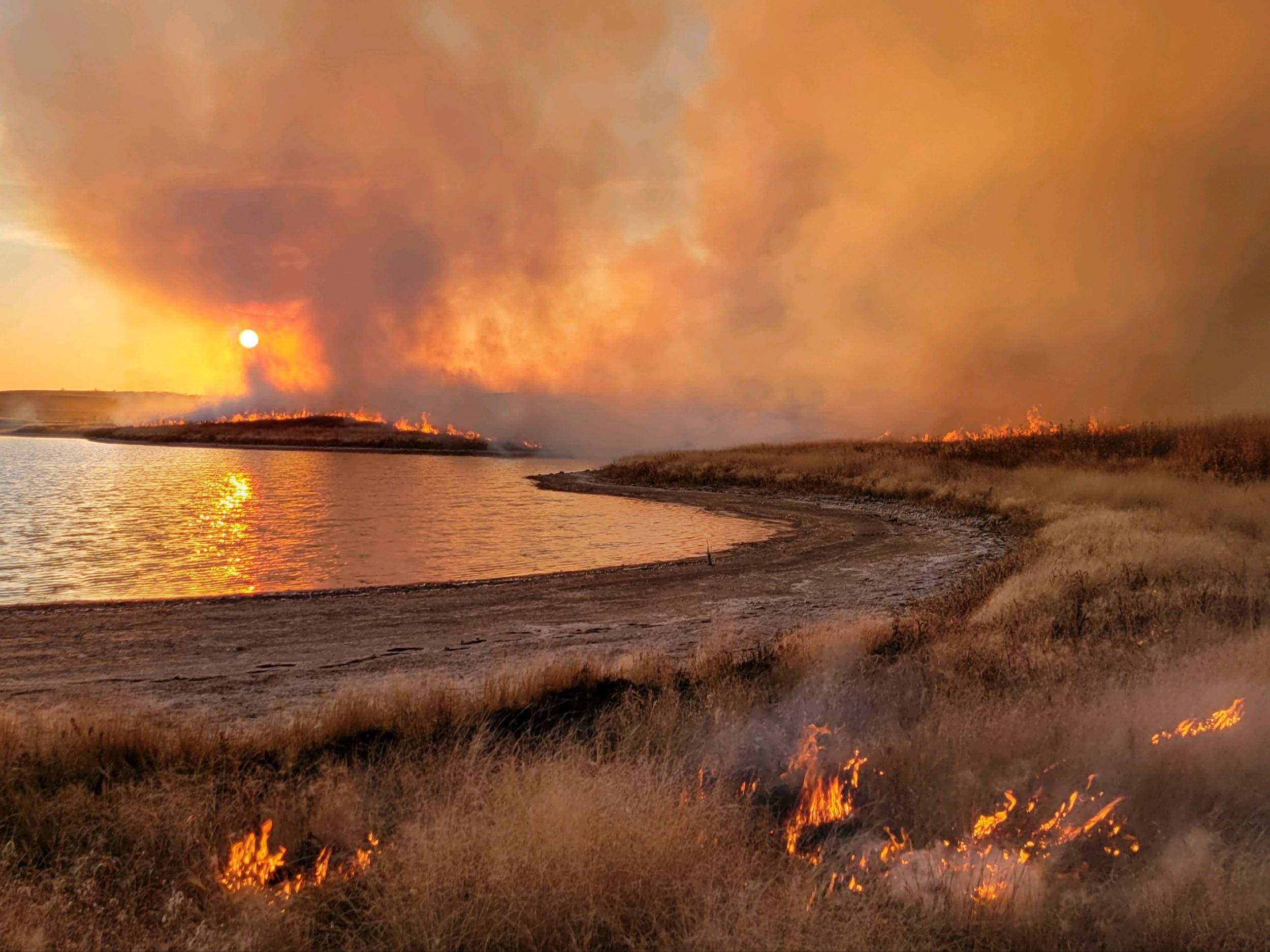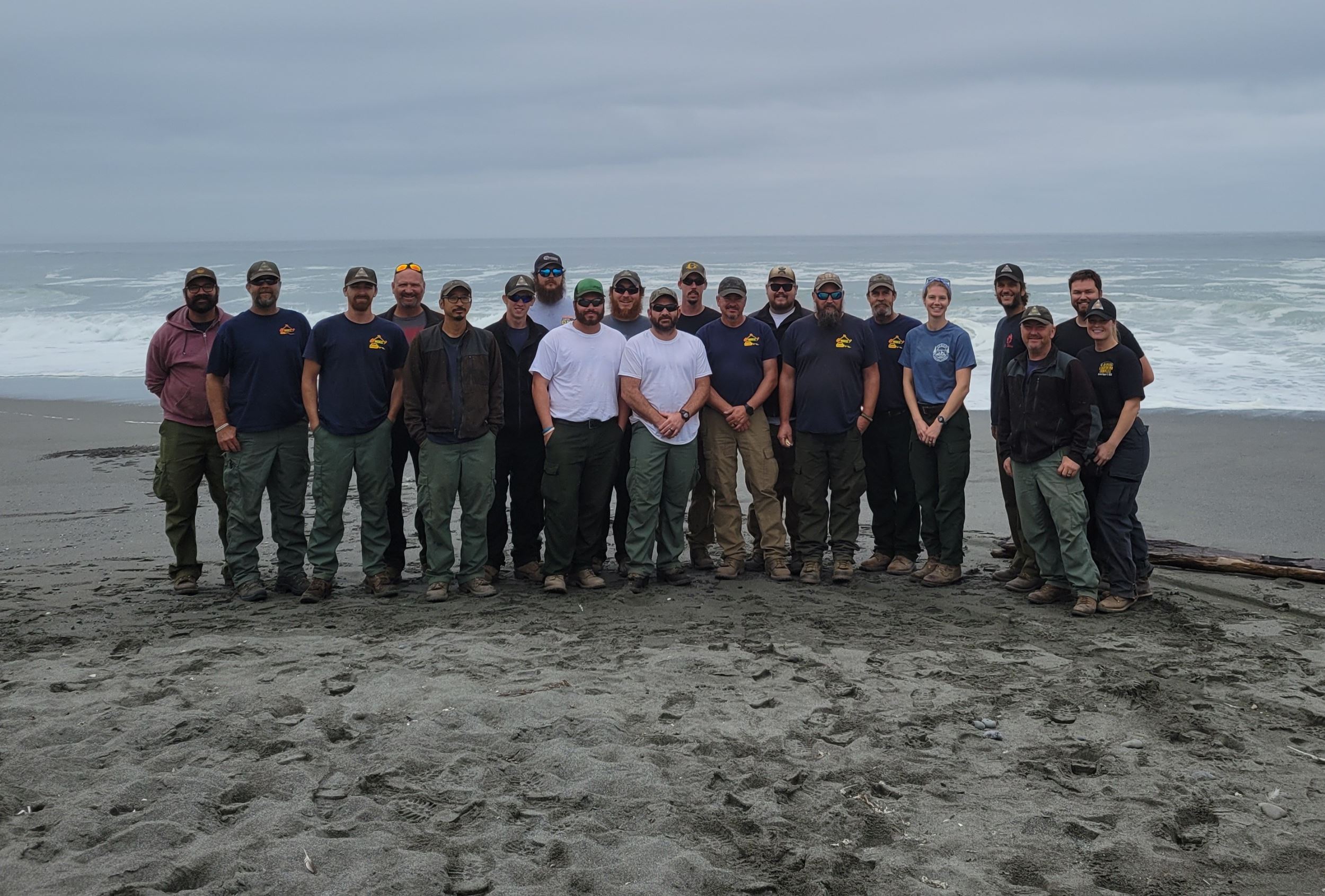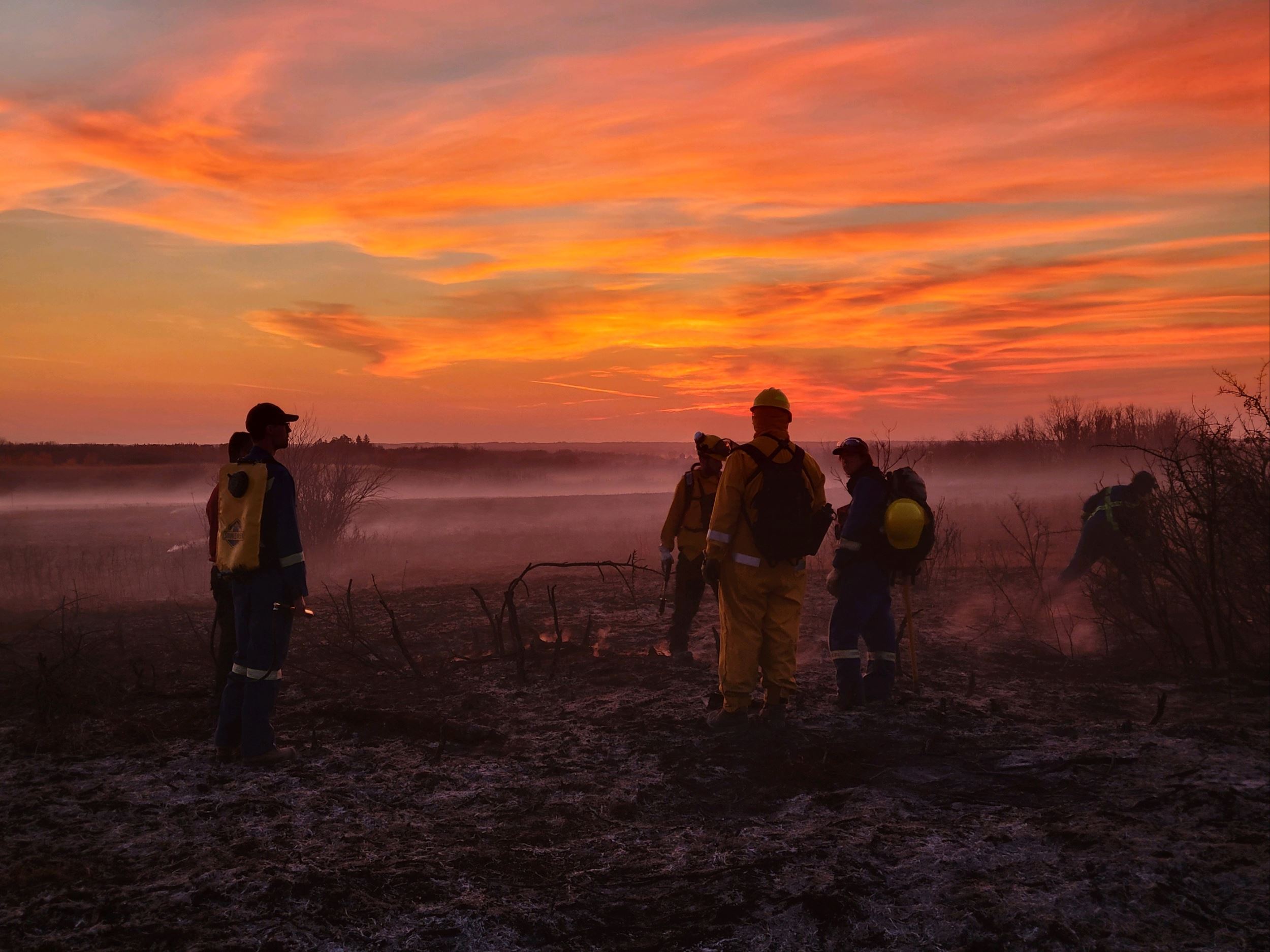Sparking Inspiration
By Erica Place on November 2, 2022 in Blog

A prescribed fire burns at the Canadian Prairies TREX where Kody Wohlers, Loess Hills land stewardship director, provided training.
This landscape evolved with fire. Not long after the last curls of smoke lift from a prairie blaze, birds rush in to pick through the charred bits and flowers and grasses begin to fill the space with renewed vigor. There are even some trees who depend on a fire’s heat to unseal their cones or pods, dropping their seeds on burnt bare soil free of competition. Fire can heal and restore land and is a well-known tool among those who steward it. But when conditions aren’t right or if suppressed for too long, fire can also wreak havoc. It takes skill to put fires where they should be, and to stop them where they shouldn’t. This year, two INHF staff were called upon for these skills.
No stranger to fighting wildfires, INHF Volunteer Coordinator Melanie Schmidt has traveled west to extinguish flames several times. But her experience and skills earned her an increased level of responsibility this summer when she was assigned to the Six Rivers Fire Lightning Complex outside Willow Creek, California. For the first time, Schmidt was leading her own five-person crew as squad boss and spent 14 days in some of the steepest country she’d ever worked in. Their crew helped dig line (a three-foot wide dirt path to stop fire), established hose lay to put out active fire, removed hazard trees, checked burned areas for any hot spots, rehabbed line that was no longer needed (restored areas to their original state to reduce further damage or erosion) and picked up hose. It was a trip full of responsibilities she tackled for the first time.
extinguish flames several times. But her experience and skills earned her an increased level of responsibility this summer when she was assigned to the Six Rivers Fire Lightning Complex outside Willow Creek, California. For the first time, Schmidt was leading her own five-person crew as squad boss and spent 14 days in some of the steepest country she’d ever worked in. Their crew helped dig line (a three-foot wide dirt path to stop fire), established hose lay to put out active fire, removed hazard trees, checked burned areas for any hot spots, rehabbed line that was no longer needed (restored areas to their original state to reduce further damage or erosion) and picked up hose. It was a trip full of responsibilities she tackled for the first time.
Facing cultural norms and stereotypes on previous burns, Schmidt has clearly silenced any question about whether women have business fighting wildfires. Tasked with keeping a fire contained while navigating a new leadership role was a challenge, but a rewarding and positive experience in Schmidt’s eyes: “Opportunities like these always make me so grateful that INHF encourages us to grow as people and give back in ways that we can.”
When you’re good at fighting fire, it’s not uncommon to be called upon to travel far and lend a hand. But with more and more conservationists utilizing prescribed fire as a management tool, you’re less likely to be called upon to help set fires. This fall, Loess Hills Land Stewardship Director Kody Wohlers travelled farther than ever before when he was invited to Canada to teach people what he knows.
Wohlers was hand-selected to train attendees at the first ever Canadian Prairies TREX, a week-long event providing opportunity to gain skills and build capacity. 11 different organizations were represented and gathered from four different provinces including Manitoba, Saskatchewan, Alberta, and British Columbia. The event was based in the Saskatoon, Saskatchewan local area. These representatives got first-hand experience in all the intricacies of prescribed fire, and their practice accomplished real fire management and ecological goals throughout the region.
The merits of prescribed fire have been slower to catch throughout Canada, and Wohlers was humbled to play a part in shifting the mindset. The 40 attendees burned nearly five times as many acres in one week as are burned in a typical year, all under the guidance and reassurance of mentors like Wohlers. “This was an incredible experience for me from a personal standpoint,” he said. “This was my first time out of the country and I’m extremely honored to represent the USA.”
to play a part in shifting the mindset. The 40 attendees burned nearly five times as many acres in one week as are burned in a typical year, all under the guidance and reassurance of mentors like Wohlers. “This was an incredible experience for me from a personal standpoint,” he said. “This was my first time out of the country and I’m extremely honored to represent the USA.”
And we’re honored that Schmidt and Wohlers represent INHF. While they’ll continue to be called upon for their skills, they’re doing more than starting and stopping fires. They’re building relationships, instilling confidence in aspiring conservationists, and opening doors for new ways of thinking. They’re sparking inspiration.